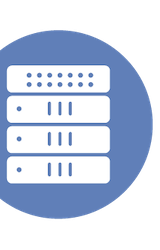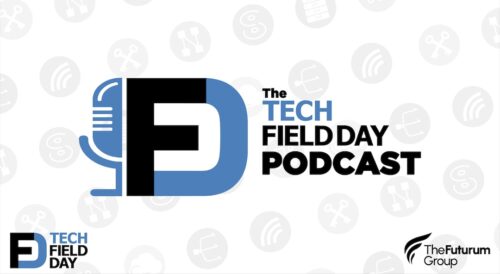Tom Hollingsworth, writing for Gestalt IT, announces the return of Networking Field Day this month with a lineup of stellar presenters, including BackBox, Itential, HashiCorp, and Kentik. Tom notes that with the rise of remote work, this Networking Field Day event will focus on technologies that can support distributed teams. From software-defined networking to open-source networking, attendees will get a chance to learn about the latest trends and innovations in the industry.
Search Results for: Pass Guaranteed Quiz 2024 SAP Valid C_THR95_2405 Exam Questions Answers 🧒 The page for free download of “ C_THR95_2405 ” on ➽ www.pdfvce.com 🢪 will open immediately 🏗C_THR95_2405 Valid Practice Questions
Deploying AI Cost-Effectively at Scale With Kamiwaza
At AI Field Day, Kamiwaza introduced their open-source stack, designed to enable GenAI to scale elastically, addressing the common hurdles of infrastructure cost and operational scale faced by enterprises. With a vision to empower businesses to achieve a trillion inferences a day and ignite the 5th industrial revolution, Kamiwaza’s stack facilitates AI deployment across various environments, from cloud to edge, guaranteeing security and manageability of dispersed data. The stack’s compatibility with Intel CPUs ensures that enterprises can harness efficient AI inferencing power with minimal energy consumption, making sophisticated AI accessible and sustainable for organizations of all sizes. Read more in this Gestalt IT article by Sulagna Saha.
The Rise of MinIO Object Storage
Ray Lucchesi saw MinIO present at Storage Field Day in January and thought they had a great session. In a post on his Ray on Storage blog, Ray details the advantages of the open source nature of their products as well as the MinIO Subscription Network “SubNet.” Check out his full post on his blog or watch the MinIO presentations on the Tech Field Day website!
Considering The Future Of Juniper’s Contrail And OpenContrail/Tungsten
Greg Farro runs down the implecations of OpenContrail moving from a more Juniper Networks controlled open source project to the Linux Foundation. To accompany this change, OpenContrail is being rebranded to Tungsten Fabric. Greg compares this to what he saw of Juniper’s main Contrail platform, which continues to add features specifically for the enterprise market to make it viable in multi-cloud and hybrid cloud deployments.
Make No Mistake, Rubrik Is a Software Company
For Ken Nalbone, Rubrik’s latest Cloud Field Day appearance was all about the software. Whether it’s a deep dive into their Polaris platform or Build, their new open source community, Rubrik is committed to creating a great software product and enabling customers to enable a software focused mindset as well.
Creating a Consistent User Experience Across the Network
Writing for Gestalt IT, Tom Hollingsworth details why consistency is a crucial component within security policies. Users desire the best possible connectivity experience without sacrificing security performance. In today’s hybrid work settings, how do we secure out-of-office devices that are beyond the corporate firewall? How can corporate networks remain secure on open Wi-Fi or cellular hotspots while still providing a high-quality user experience? Hollingsworth dives into Aruba EdgeConnect – the software-defined connectivity solution that will keep networks secure and work environments flexible. Check out the rest of his thoughts on the Network World website.
Startup Radar: ZeroStack Streamlines OpenStack For Private Clouds
Drew Conry-Murray gives a look at what ZeroStack is providing. Simply put, they’re offering an OpenStack based private cloud software solution that’s easy to deploy and configure. ZeroStack supports both their own 2U units, or servers that an organization has in house. Overall, Drew thinks the market for these kind of solutions is still open enough for ZeroStack to really make an impact. Perhaps the biggest appeal, ZeroStack is saying you don’t need to be an OpenStack expert to operate their solution. That certainly lowers the barrier to entry for a lot of enterprise customers.
DPDK Project Moves To The Linux Foundation
Drew Conry-Murray the Data Plane Development Kit being brought into the Linux Foundation as an official project. DPDK was originally developed by Intel before being open sourced as a way to accelerate packet processing in CPUs. Drew highlights that DPDK supports not just x86, but a variety of CPU architectures, as well as being able to run on NICs from Broadcom, Cisco, and Mellanox.
NFD26: Kentik Adds Nifty Capabilities
In this LinkedIn post, Peter Welcher explores Kentik’s latest capabilities presented at Network Field Day 26. The key features include the addition of synthetic monitoring, an open-source component focused on data exchange, and further cloud monitoring capabilities. The author also delves into Kentik’s future plans, suggesting the company’s growth and innovative approach make it a force to watch in network data visualization and analysis.
Mist Unveils AI-Driven Wi-Fi
In this post, Rowell Dionicio looks at the WiFI advances shown by Mist Systems at Mobility Field Day earlier this month. The company offers a cloud-managed WiFI service with a constant stream of updates, bug fixes, and new features through their dashboard at scale via microservices. He also got to see Marvis, Mist’s AI-driven Virtual Network Assistant. This can be used with troubleshooting, including being smart enough to open tickets with Mist automatically.
BiB 24: Juniper OpenContrail At NFD17 – One Fabric To Bind Them
Greg Ferro and Drew Conry-Murray posted a Briefings in Brief episode on Juniper Networks’ presentation from Networking Field Day last week. They focus on their announcements regarding Contrail. Juniper reviewed the difficulties of fully open sourcing OpenContrail, how Contrail and OpenContrail will diverge going forward, and where they see the commercial product going from here. Once you listen to the episode, be sure to watch the full video of their presentation.
NGINX’s Roadmap to the Future Is Paved With Innovations
Tech Field Day Alumni, Nginx was acquired by F5 in 2019, it has experienced a surge in human and monetary capital. This injection of resources has boosted the company into innovating cutting-edge tech developments, and revolutionizing operations in commercial and open source communities. See what they are doing now.
DriveScale Gives You Ethernet With a Side of Storage
I wrote up a review of what DriveScale showed off at Tech Field Day earlier this month. Their approach to disaggregating storage within the server rack is really interesting. As opposed to other designs I’ve seen from vendors, they offer something that’s remarkably open and adaptable. While they’re still in the appliance licensing game, they seem more interested in creating a unique architecture to make this happen. Worth the read if only to see their founders’ impressive resumes!
Presenting Vendor Preview: PNDA
Brandon Carroll gives us another preview of a presentation from Networking Field Day this week. This time he’s looking at PNDA. Sadly this is not an evolution on the personal digital assistant. Instead, it’s an open source scalable analytics platform, which is probably a lot more useful.
Cloud Field Day 2 Preview: Platform9
Julian Wood introduces Platform9, a regular Field Day event presenter returning for Cloud Field Day this month. First, he outlines their past products before moving into what he is most interested in hearing more about, Open Source and Serverless.
New Role, Same Goal
Former Tech Field Day delegate Matt Oswalt surprised some folks by presenting for Juniper Networks at Networking Field Day. In this blog post, he writes about taking a new role with Juniper in a marketing capacity, shifting from focusing exclusively on code into a marketing role. In this, he’ll still be writing technical blog posts, contributing to open source, and researching new topics, but will now have more opportunities to share this with the community. We wish Matt the best of luck in the new role, and look forward to hearing from him more often!
Cloud Field Day 2 Preview: Scality
Julian Wood is interested in hearing more about Scality at the upcoming Cloud Field Day. Here he overviews the company before discussing Zenko, Scality’s open source mulit-cloud controller. He also looks forward to hearing more about how Scality sees the growth and use case of non public cloud object storage.
TFDx With AMD: More Than Just a Bag of Chips! (Part2)
AMD presented their VMware Architecture Migration Tool (VAMT), a VM migration and disaster recovery toolkit developed in partnership with VMware. The open-source tool, initially designed to automate the replatforming of VMs to AMD EPYC, also supports any migration between x86-to-x86 architecture, making it valuable for disaster recovery and general data resilience strategy. The tool’s key features include the automation of powering up and down of VMs, their movement to new locations, and clean-up after migration, thereby streamlining migration tasks and ensuring efficient applications functioning. In this article, Matt Tyrer shares his impression of VAMT following their Tech Field Day presentation at VMware Explore 2023.
Ryussi – Or Why Another SMB Stack Is Handy
First time Storage Field Day company Ryussi presented at last week’s event, showing off MoSMB, their SMB3 stack. Dan Frith wrote up his thoughts on the solution. Dan thinks it could be an interesting solution for companies not comfortable with the terms of open source alternatives, like Samba.








